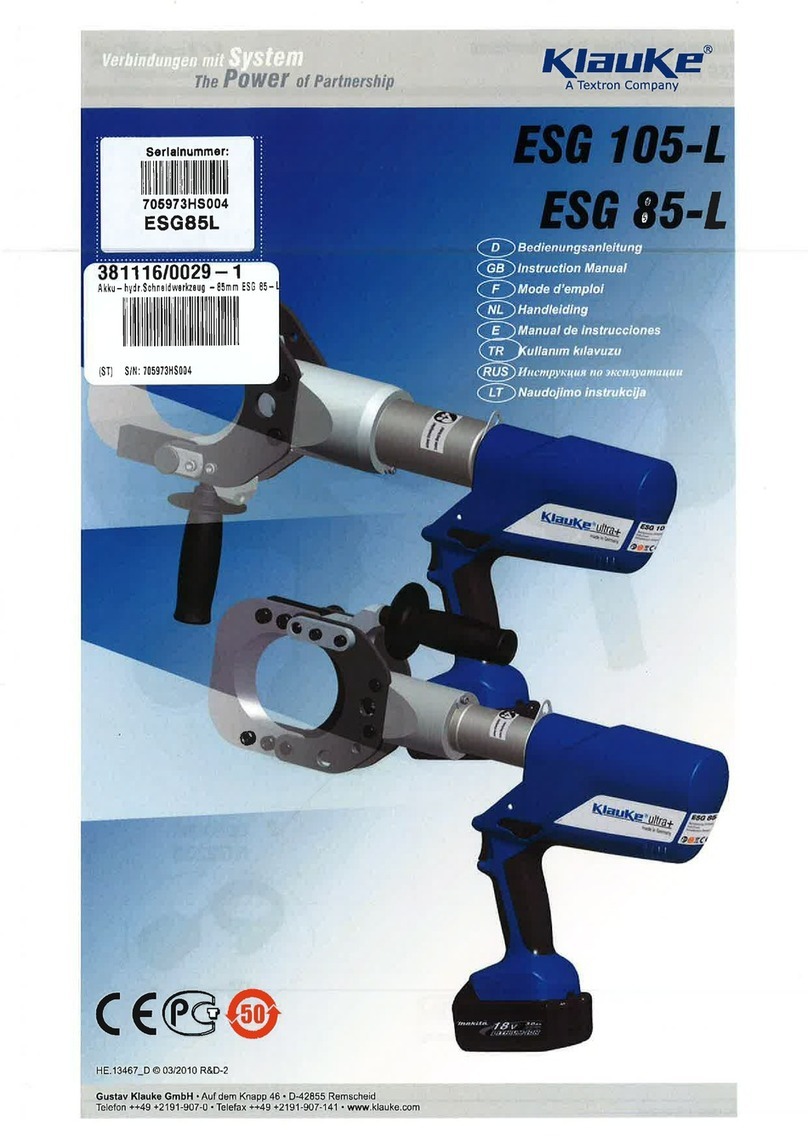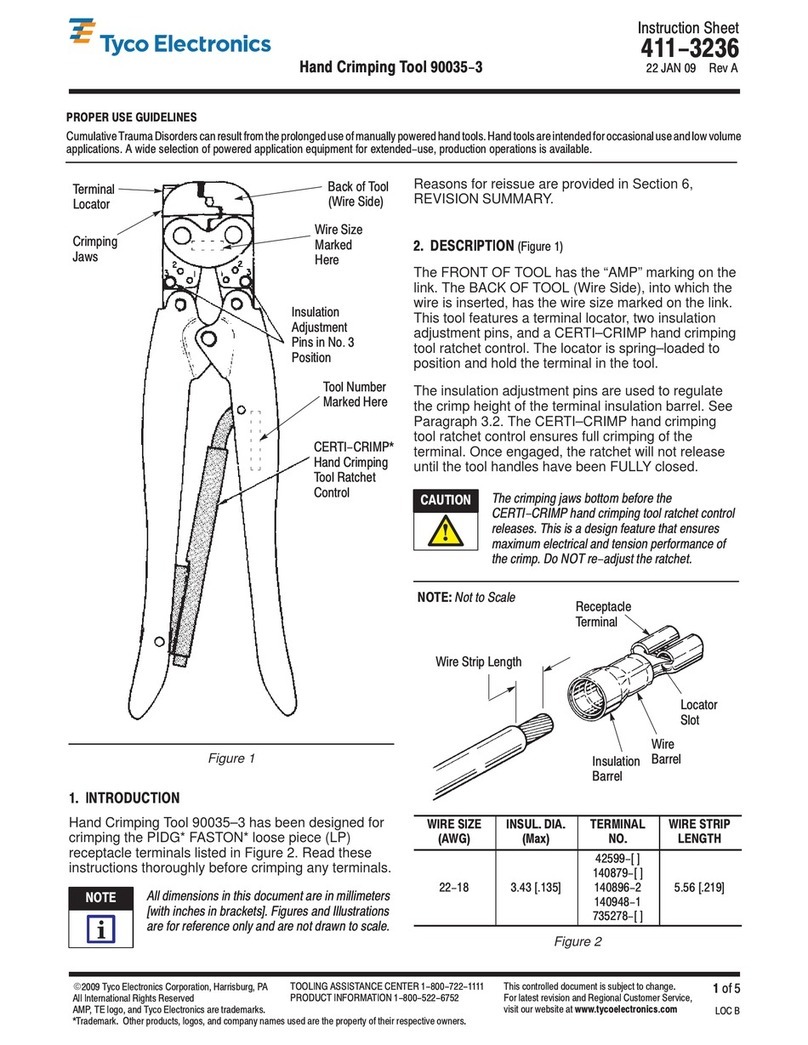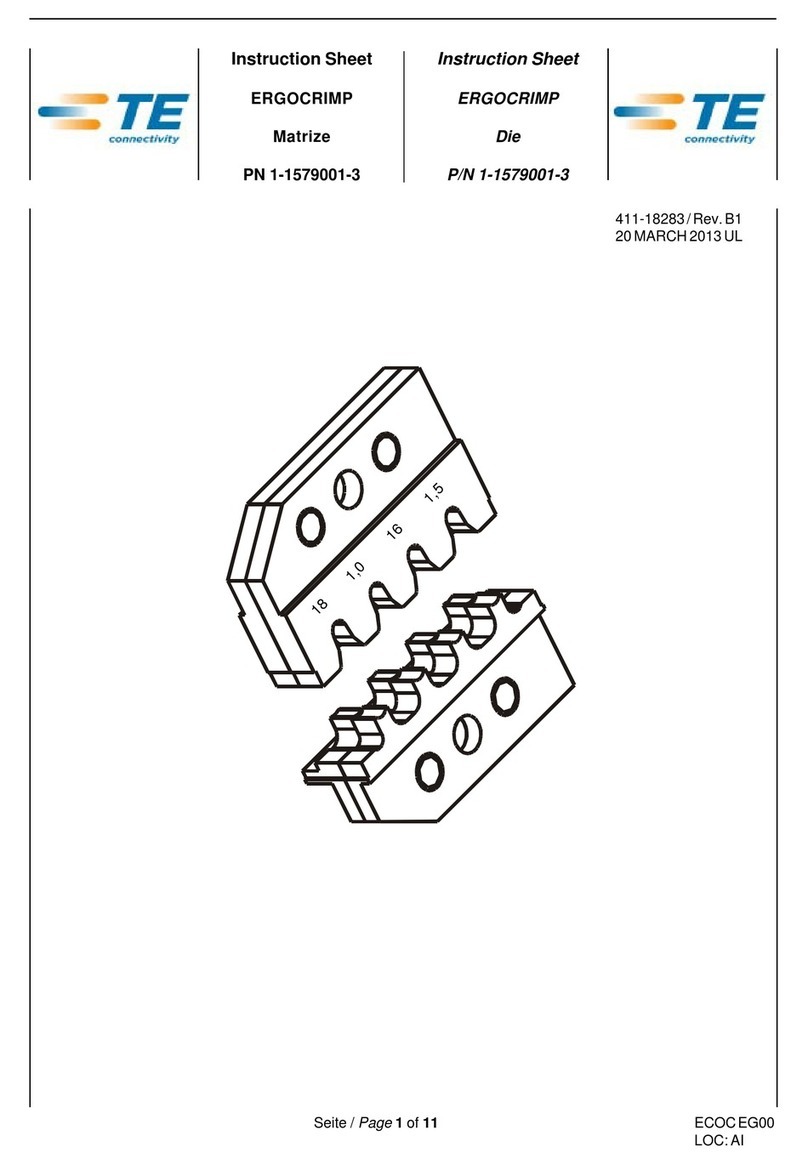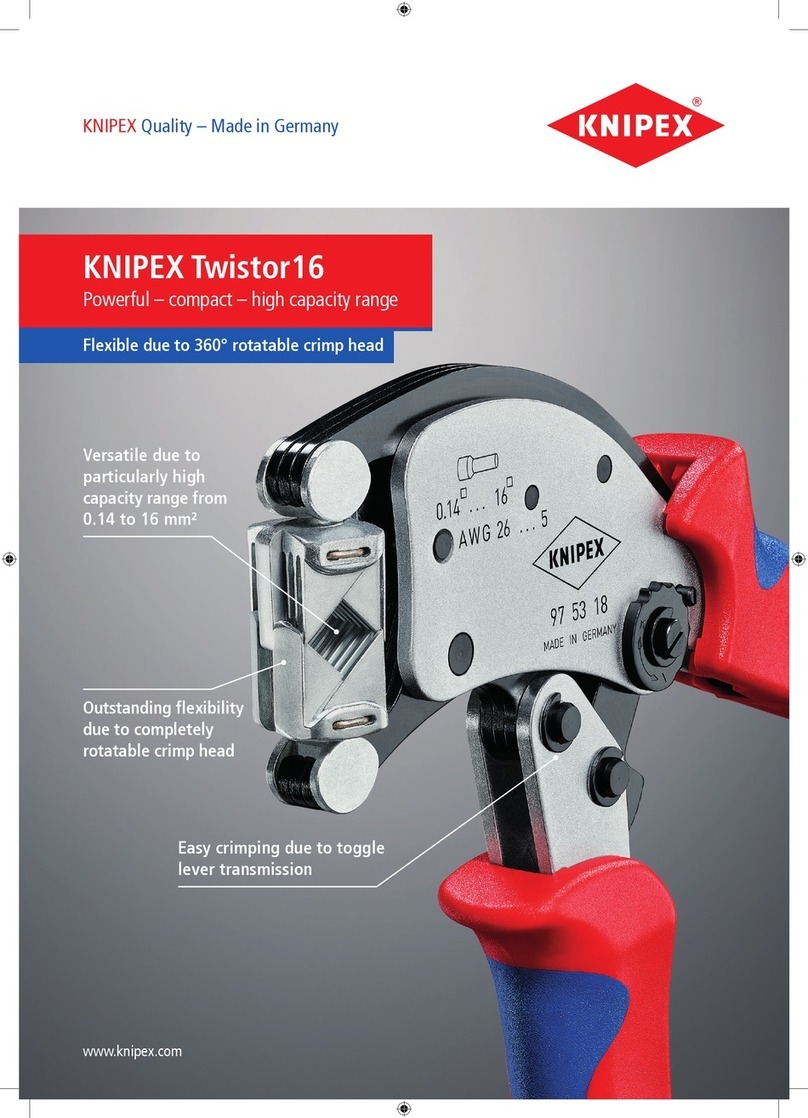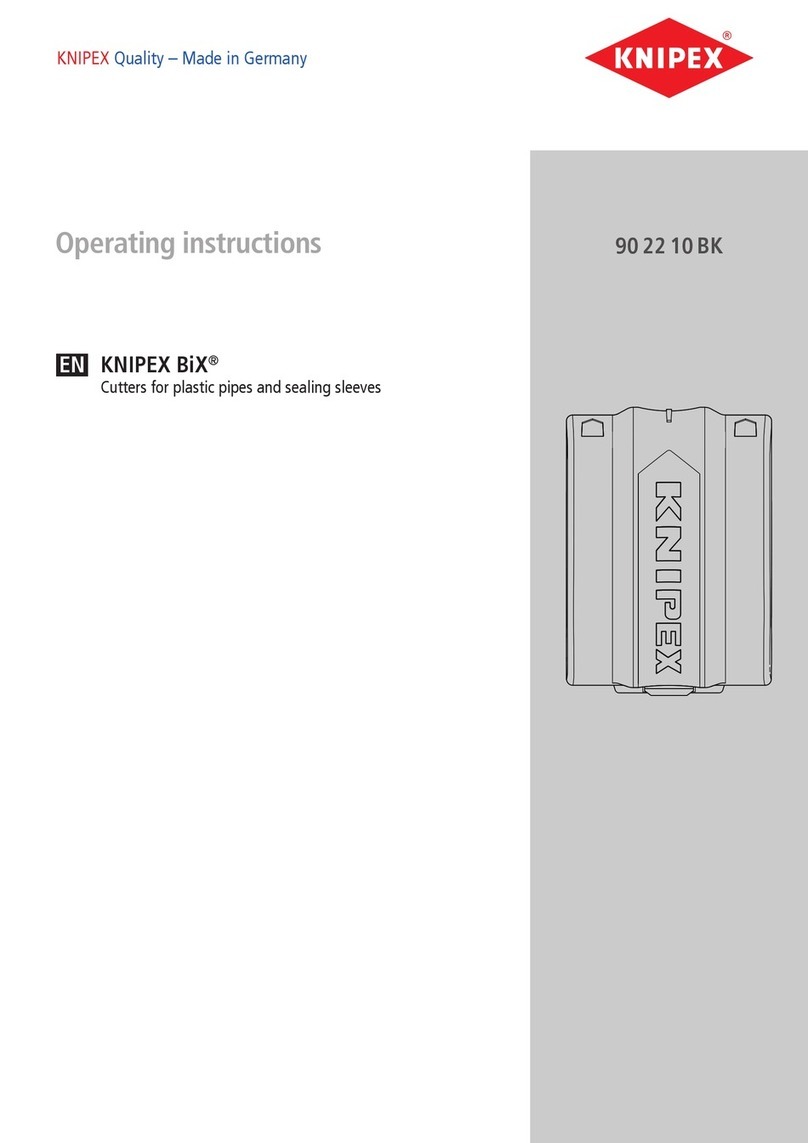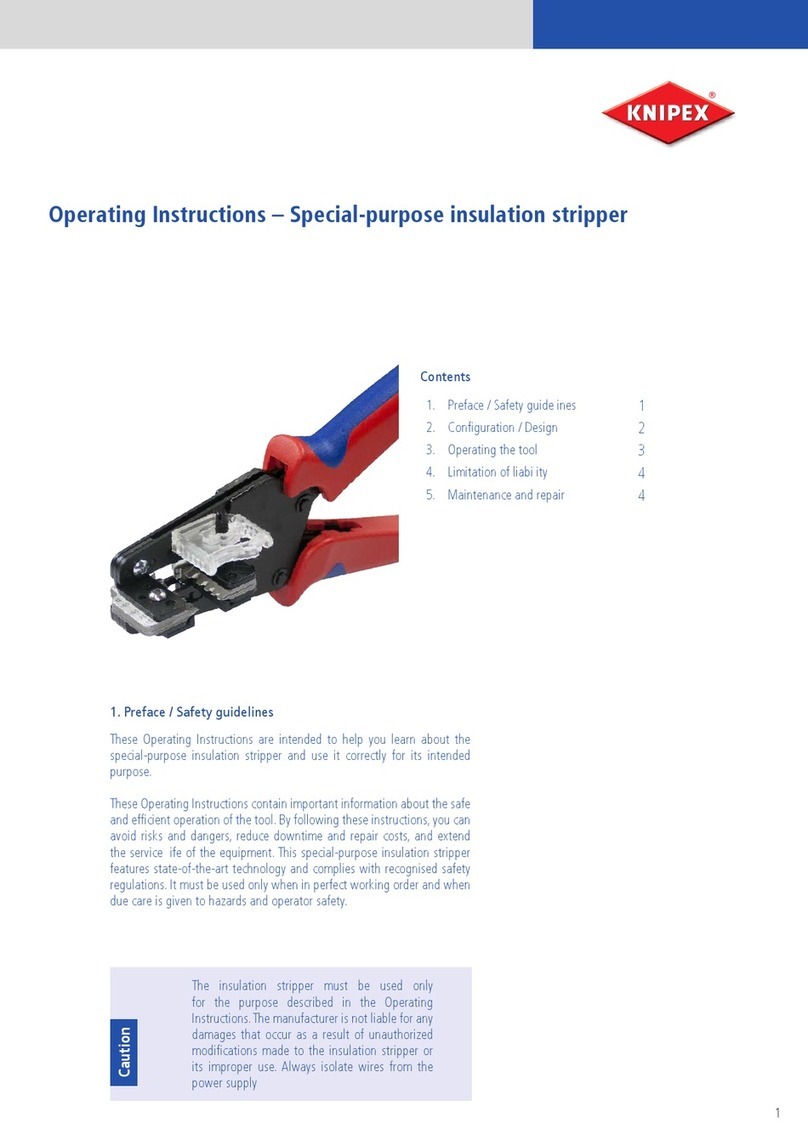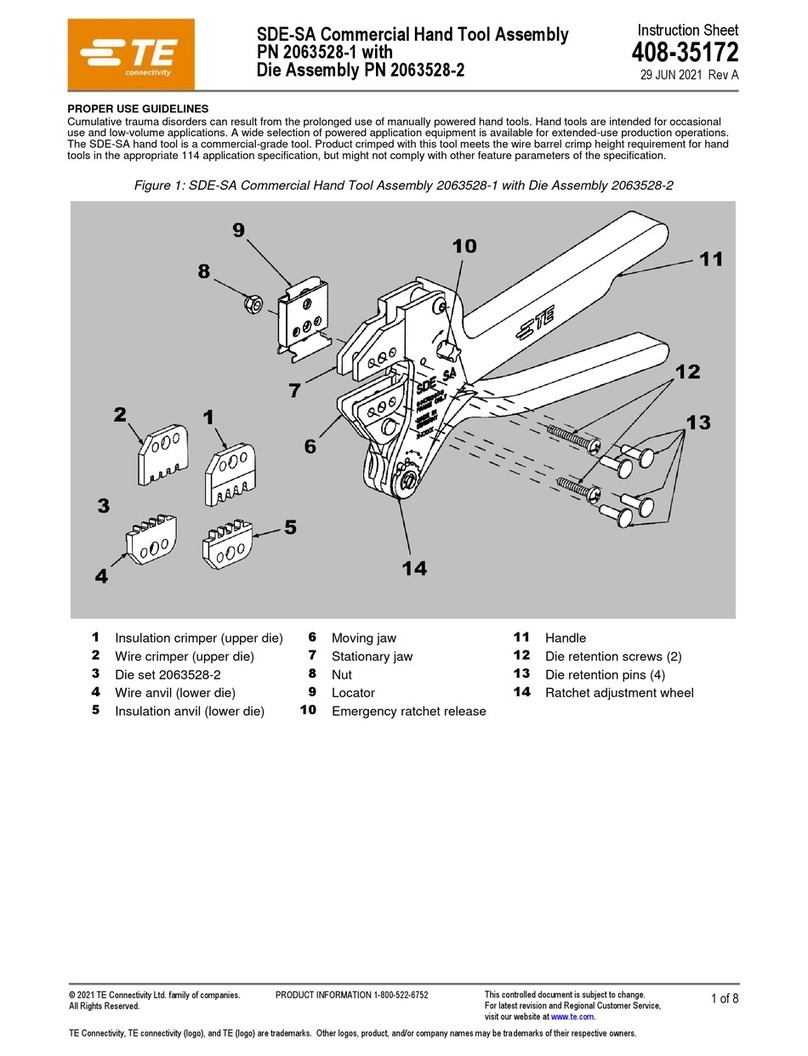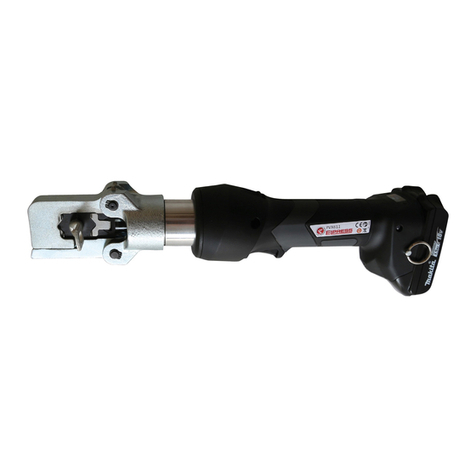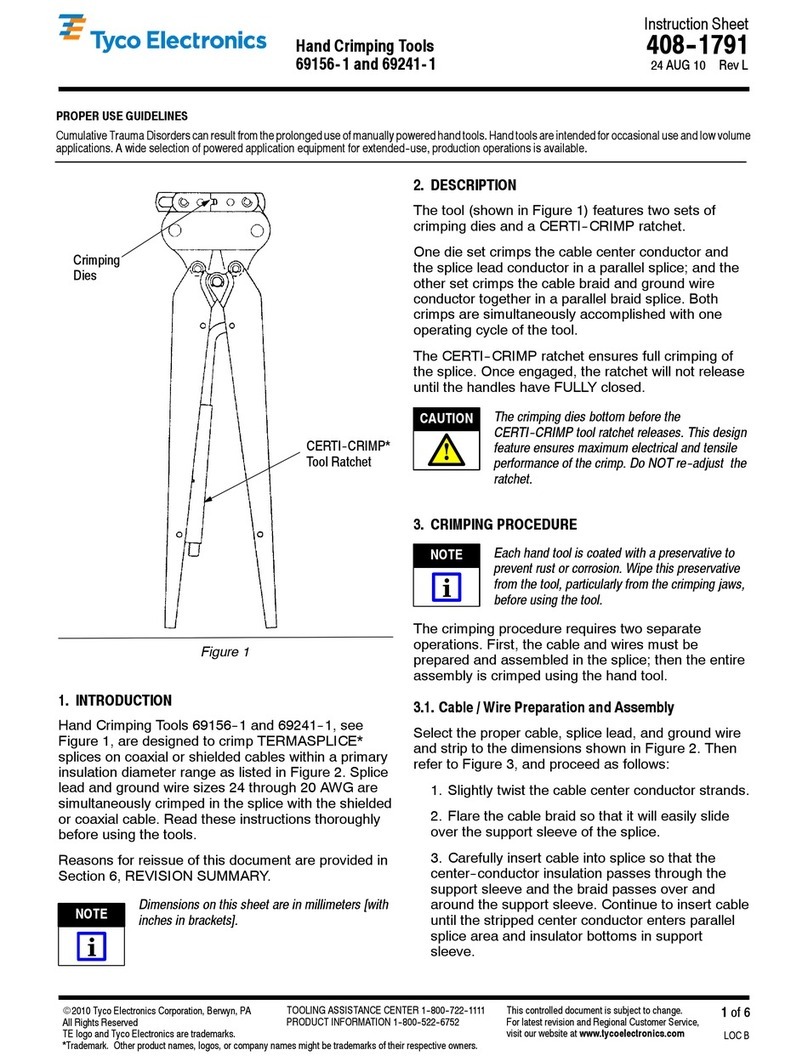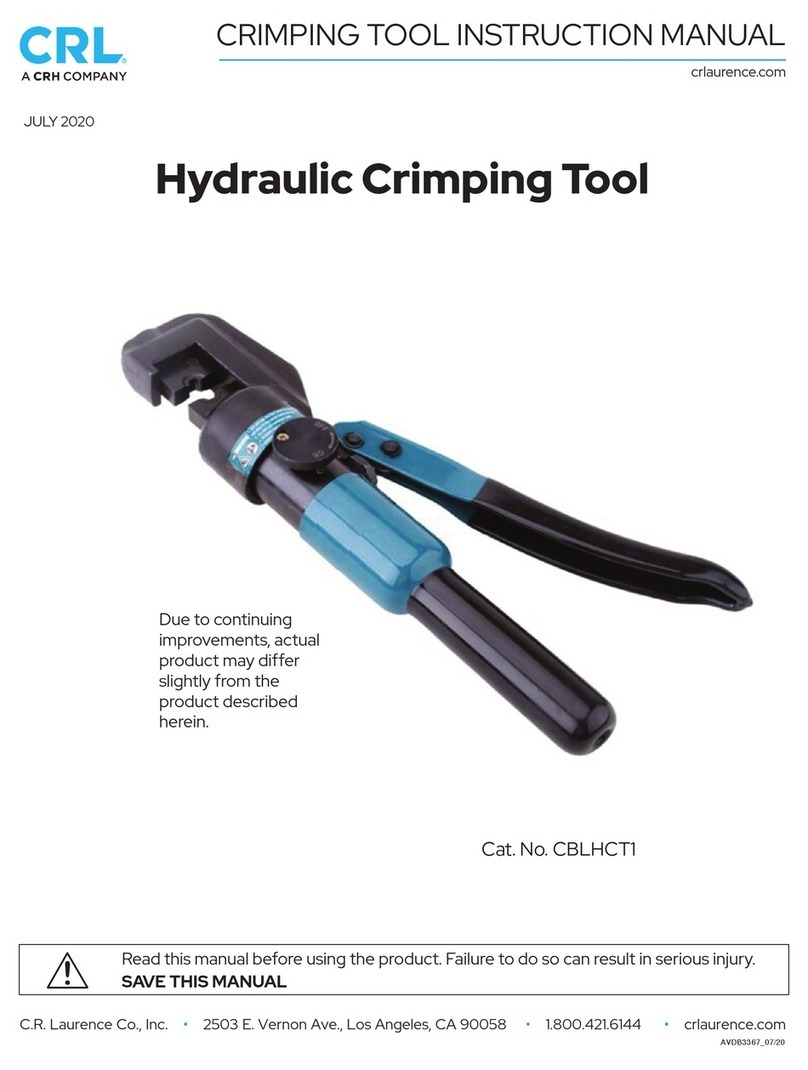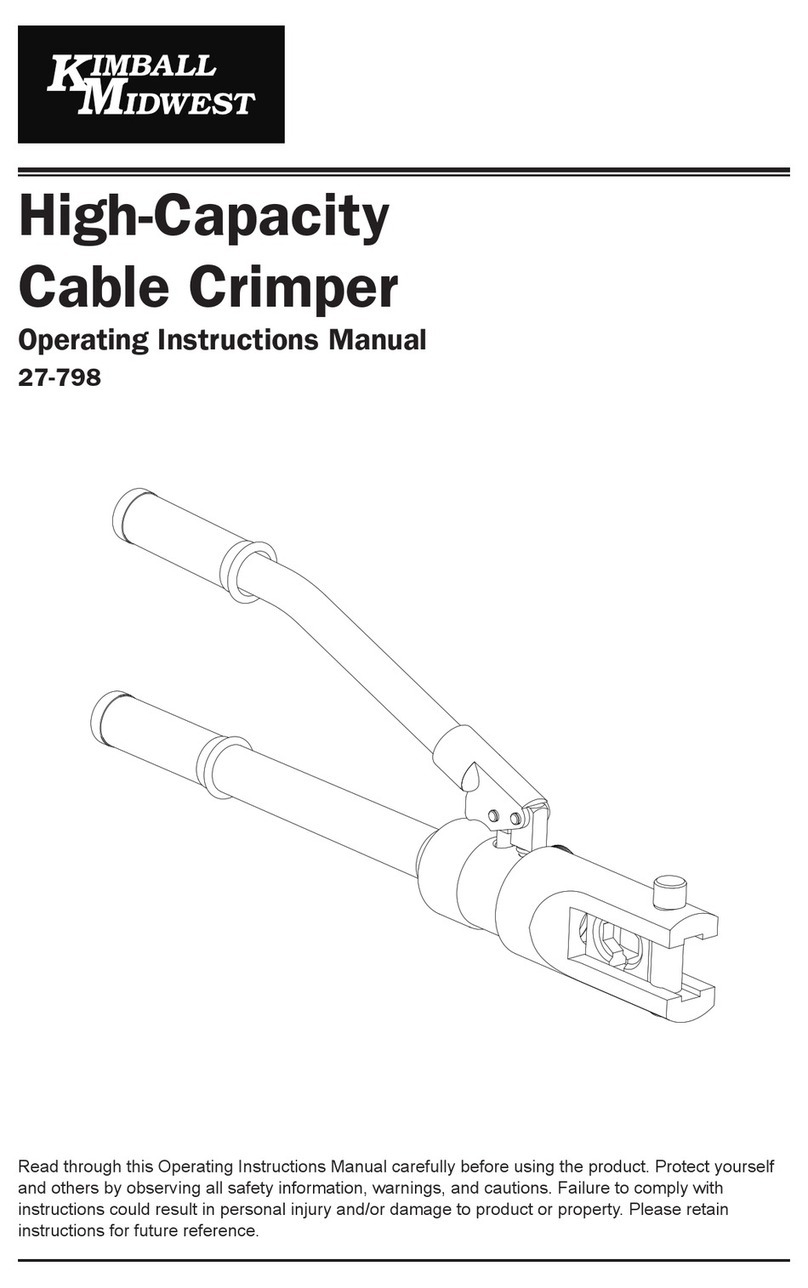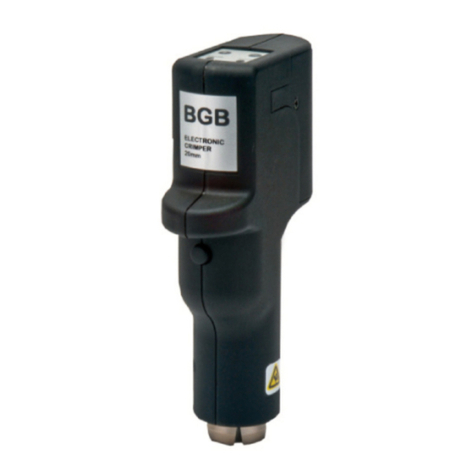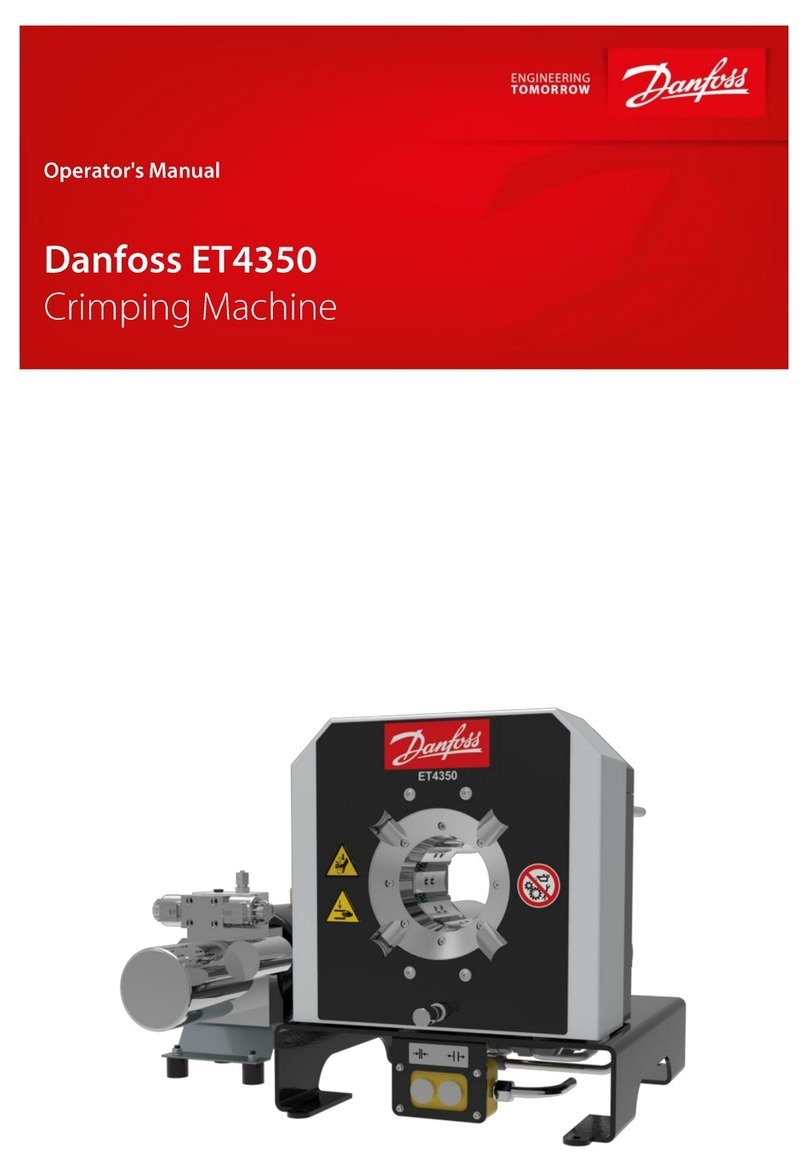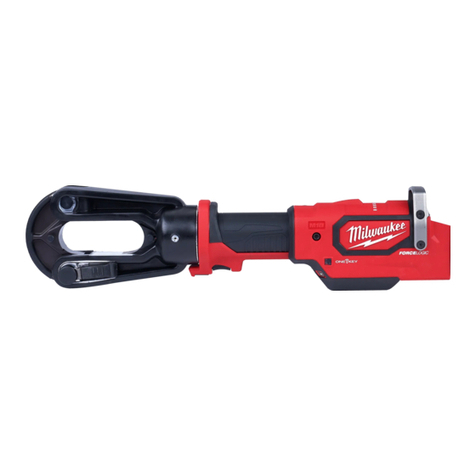1. Intended use
The crimping tools are designed exclusively for use with die sets that
are either distributed by KNIPEX or which KNIPEX has declared as being
compatible. The tools and the die sets must be used solely for the purpose
as envisaged by KNIPEX. The tool is not intended for use in different or
more specialised applications. Any work performed with this tool that is
not in line with its intended use can cause damage to the crimping tool, its
accessories and the crimped contacts.
KNIPEX accepts no liability for losses resulting from
the use of unsuitable crimping die sets or crimping die sets from other
manufacturers; or
the use of the tool in applications that are outside the scope of the
tool’s intended use.
Using the tool “as intended” also implies following the Operating
Manual, performing inspections and maintenance work as instructed and
compliance with all applicable safety provisions in their latest published
version.
Read this Operating Manual carefully!
Follow all safety instructions as provided!
Ensure compliance with national safety standards!
Read and follow all safety instructions and guidelines! Any failure to
follow the safety instructions and guidelines as given can cause electrical
shock, re and/or serious injury. Accordingly: Ensure that you retain all
safety instructions and guidelines for future use and always include these
when passing the equipment on to others.
2. General safety instructions
Icons are used to mark sections of text as described below. Ensure you
follow these instructions and take especial care in such situations. Also
provide other users and technicians with a full set of health and safety
instructions!
Danger of injury from airborne fragments.
If the tool is used incorrectly, or if worn or damaged
die sets and crimping tools are used, the operator risks
injury from airborne fragments.
Accordingly:
Crimping tools must be used solely by qualied personnel.
Maintenance must be performed at the required intervals.
Before each use, inspect the crimping tools and die sets for
cracks and other signs of wear.
Crimping tools and die sets with material aws or other signs
of wear must be taken out of service immediately and no
longer used.
Only use crimping tools and die sets if they are in perfect
working order.
If crimping tools or die sets have been used incorrectly, they
must be removed from service and inspected by an authorised
service centre.
Damage to/malfunctioning of the crimping tool and die
set as a result of improper handling.
Accordingly:
Do not continue to use worn crimping tools – replace
them immediately.
For transportation and storage, use the carrying case
and store the crimping tools and die sets in a dry
place.
Ensure all damage is inspected without delay by an
authorised service centre.
Observe the safety instructions for detergents and
corrosion protection agents used.
The information in this section is of particular relevance
to the description of a function or an operating
procedure.
Please note
For working and installation instructions for crimp contacts,
consult the documents as supplied by the manufacturer.
Please note
Read all safety warnings and all instructions. Failure
to follow the warnings and instructions may result
in electric shock, re and / or serious injury. Safe all
warnings and instructions for further reference.
Warning
Warning
This section cautions the reader about a potentially
dangerous situation that can lead to minor or moderate
physical injury and/or damage to property.
Caution
Caution
